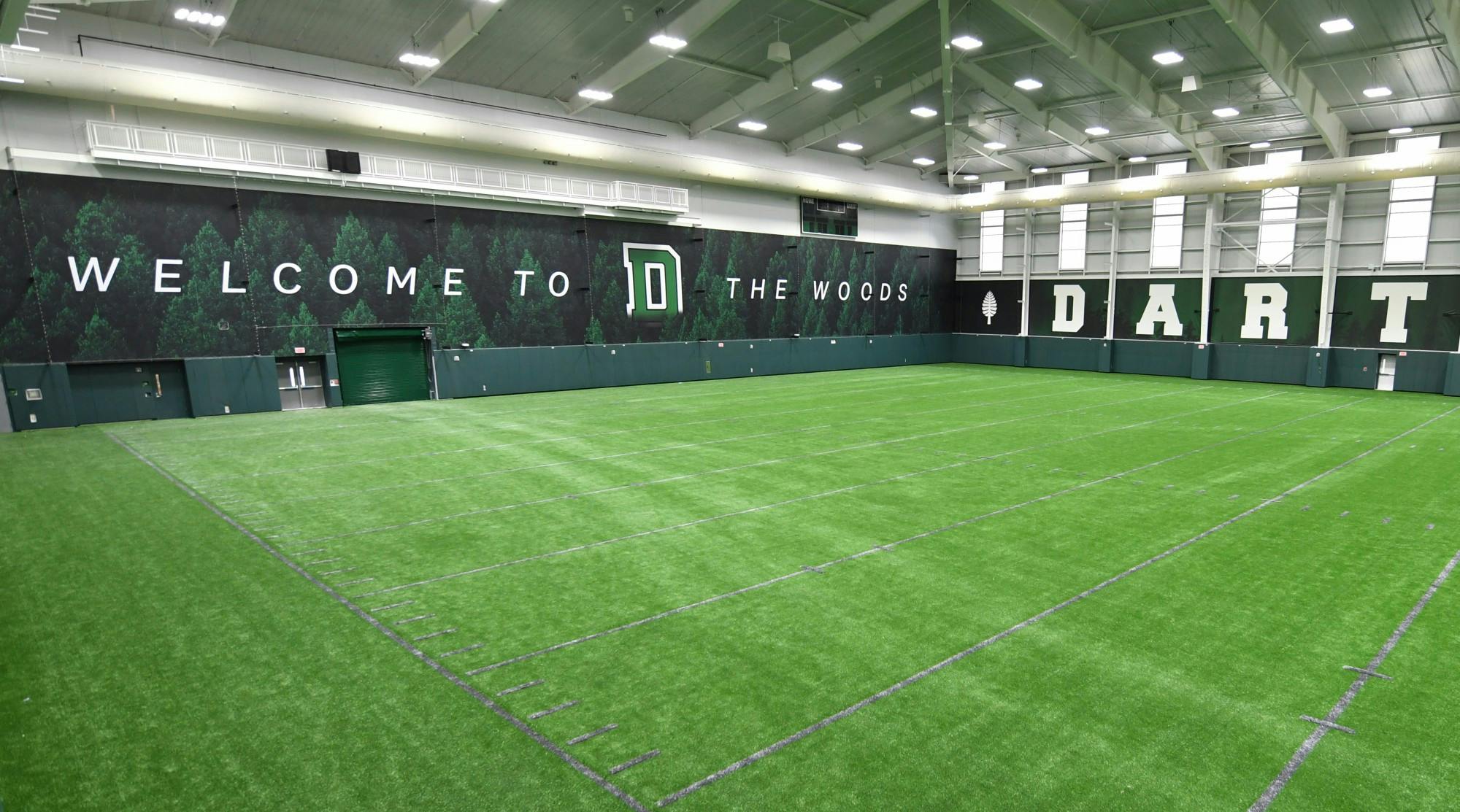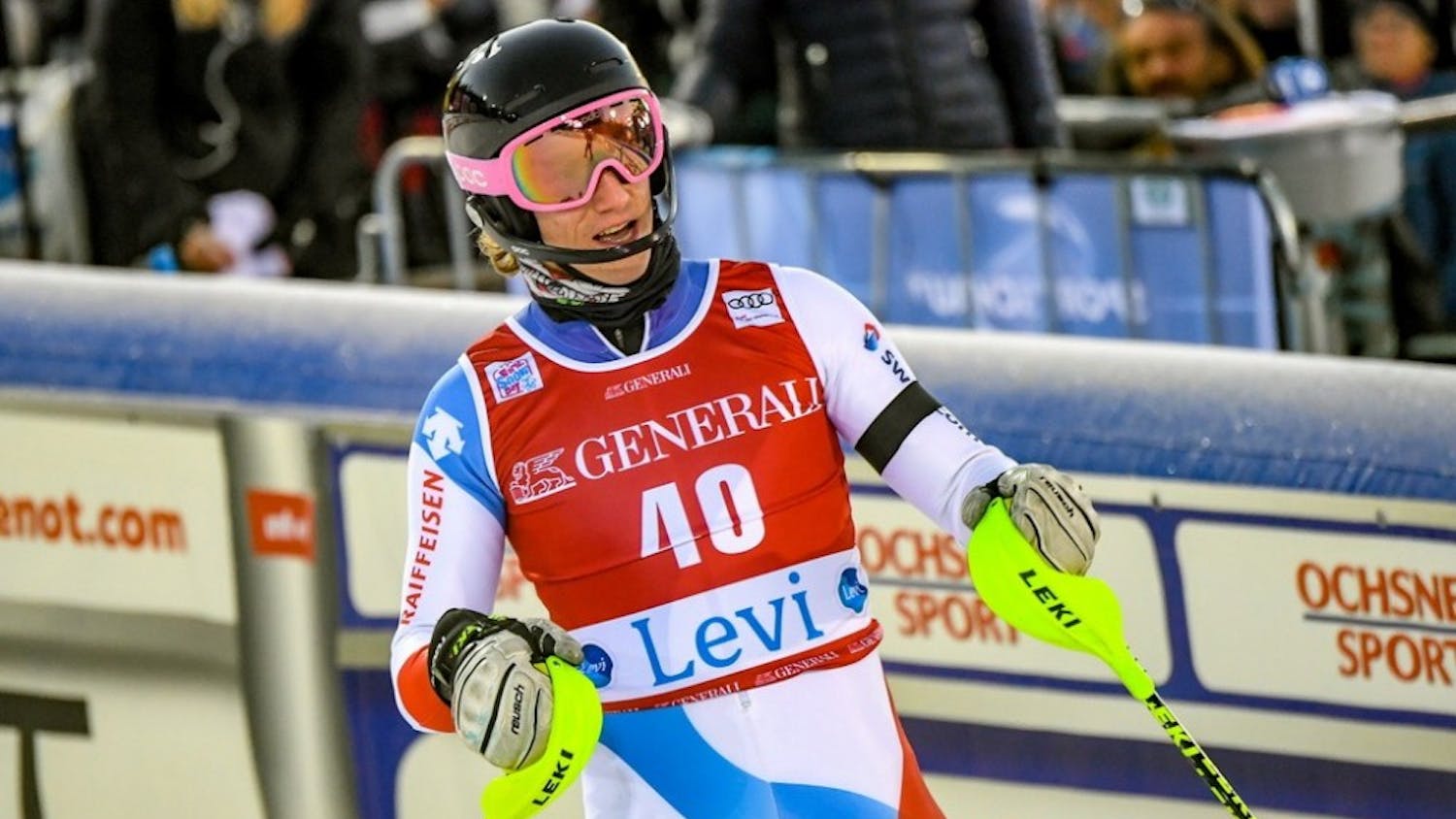Student-athletes will be greeted with a new indoor practice facility when they return to campus. While the 70,000-square-foot facility faced several roadblocks to approval, construction officially finished in April. Dartmouth is now home to the largest permanent indoor practice facility in the Ivy League.
Given New Hampshire’s harsh winters, the College has recognized the need for a new indoor practice facility “for many years,” according to deputy director of athletics and recreation Bob Ceplikas ’78. Before the IPF was completed, the Leverone Field House was the only practice facility available for field-sport athletes during the winter.
“Leverone Field House has been bursting at the seams during cold and inclement weather, as the demand for time and space has greatly exceeded the supply,” Ceplikas wrote in an email statement. “Since Leverone serves as the primary venue for indoor track and field, our field teams have been squeezed into the remaining hours, often quite late at night or very early in the morning.”
The College applied for a permit to build the new facility in March 2016; however, the Hanover Planning Board initially denied Dartmouth’s application in December of that year. After the Grafton Superior Court upheld the decision upon appeal by the College, the case ultimately went to the New Hampshire Supreme Court, which ruled in Dartmouth’s favor in November 2018. The construction process began last January and “went much more smoothly” than the approval process, according to Ceplikas.
As part of Dartmouth’s Call to Lead campaign, fundraising for the $27 million building began in 2016. Ceplikas wrote that the College’s development office was able to “[identify] and [solicit] alumni and other prospects with a strong affinity for the sports that will be using the facility” and secured most of the donations in “just seven months.” The IPF will be formally dedicated in the fall.
The new building — which sits next to Boss Tennis Center and Scully-Fahey Field — will primarily be used by eight different varsity teams: men’s and women’s lacrosse, men’s and women’s soccer, baseball, football, women’s rugby and softball.
The IPF boasts a 56,000-square-foot artificial turf field, almost three times the size of the 20,000-square-foot field inside Leverone’s track. Ohad Yahalom ’22, a member of the men’s soccer team, said that the team was often limited to three-on-three or four-on-four matches while training in Leverone, and he feels “very grateful” for the new facility’s larger field.
“[The IPF] is very close to the full size [of a soccer field], so we're going to be able to do a lot of big picture drills,” Yahalom said. “Soccer is a conditioning sport, and we require a big space to really get the most out what the team is trying to accomplish.”
Women’s rugby player Joanne Wang ’23 agreed that the IPF should have a positive impact on the team’s overall performance by improving practice times and field size.
“It was really hard for me to visualize when we would do a breakdown or a set-piece play in a condensed setting,” Wang said. “When the coach was explaining something, it was difficult to apply what she was describing to the actual width of a rugby field.”
The IPF’s turf material also provides an upgrade. The surface will be made of FieldTurf, which is the same grass-like material used on Memorial Field and Scully-Fahey Field, among other facilities. Leverone uses a non-infill turf, which is associated with a higher injury risk and lower resilience than other turfs.
According to Yahalom, the men’s soccer team has faced challenges training on the softer Leverone surface, especially after spending its competitive fall season on grass and FieldTurf.
“The turf is kind of like a carpet, and it [is not] really like we're used to playing in, so there's a lot of injuries that were correlated to Leverone,” he said. “[Now], transitioning from the fall into the winter, it's going to be smooth, and we get to keep up our momentum going into the spring and hopefully the next season.”
Coaches and athletes will also be able to divide the IPF field into halves with a retractable curtain, according to Ceplikas. Baseball head coach Bob Whalen highlighted this feature as especially beneficial when the team breaks off into groups for practice.
“When we go to practice, we can't just [scrimmage] — there are other parts of the game,” Whalen said. “Where the nets are, you can divide up the building in a way that you can still play safely while other parts of practice and other positions can continue as well.”
Moreover, the IPF includes two batting tunnels for baseball and softball. These tunnels are separated from the main field and can be used while other athletes are training on the field, according to Ceplikas.
Whalen noted that in addition to the benefits for current Dartmouth students, the IPF can also help to draw prospective student-athletes.
“You're competing for recruits and you're competing in facilities, and this is a fantastic addition,” he said.
The new IPF’s impact reaches beyond the primary eight varsity sports who will use the facility; it also improves practice times for field hockey and club sports through what Ceplikas referred to as a “domino effect.” Since those eight sports previously held priority over club sports for Leverone practice times, club sports teams now have improved access to field space.
Whalen said that he sees the IPF as a good long-term investment for Dartmouth athletics.
“I think it's going to have an incredibly positive impact on the experiences for the players and the athletes,” Whalen said. “Having more quality space other than just Leverone will allow more athletes to have better practice times during the day and be all that more productive while you're actually there because of the quality of the facility itself.”



